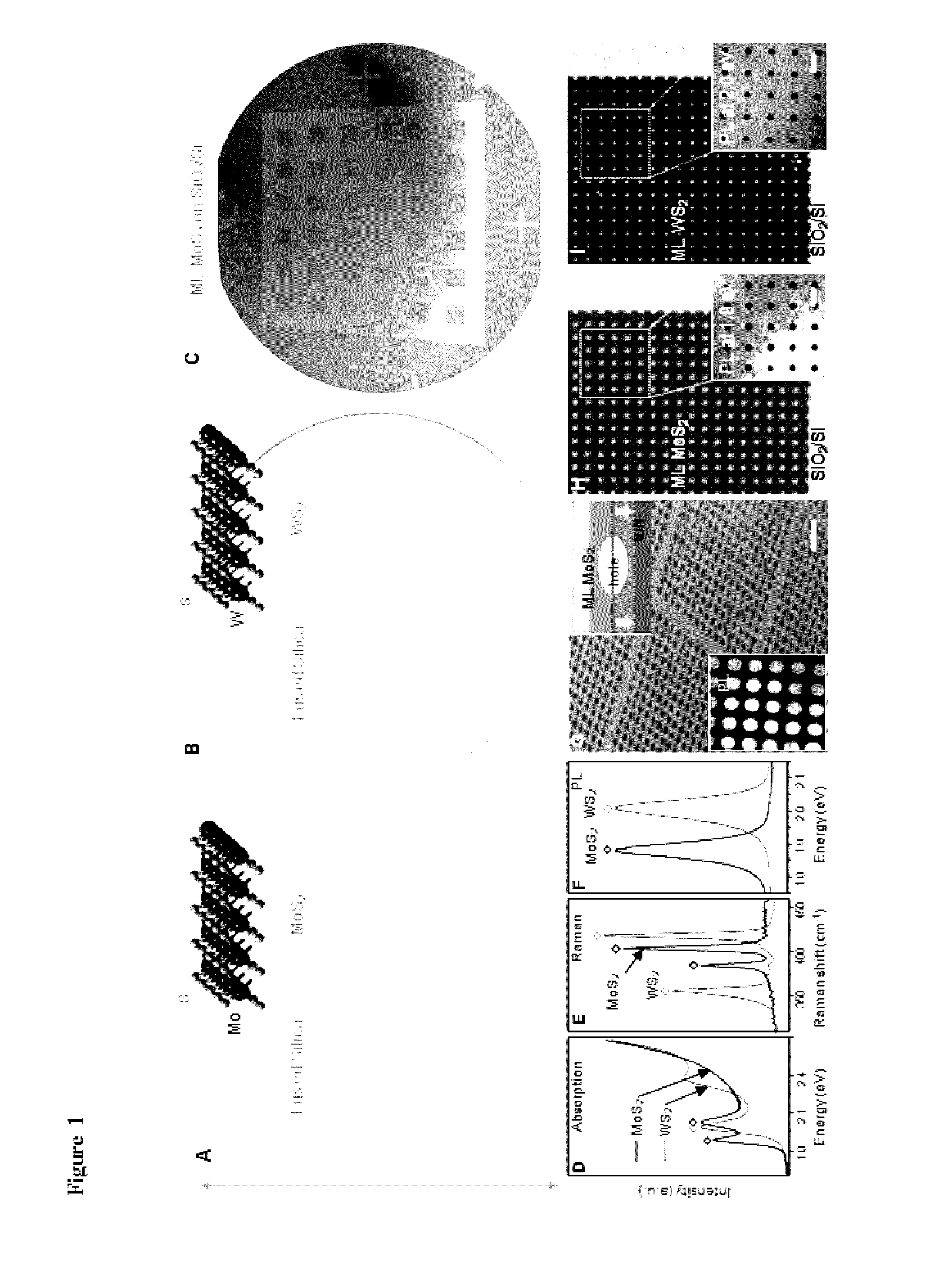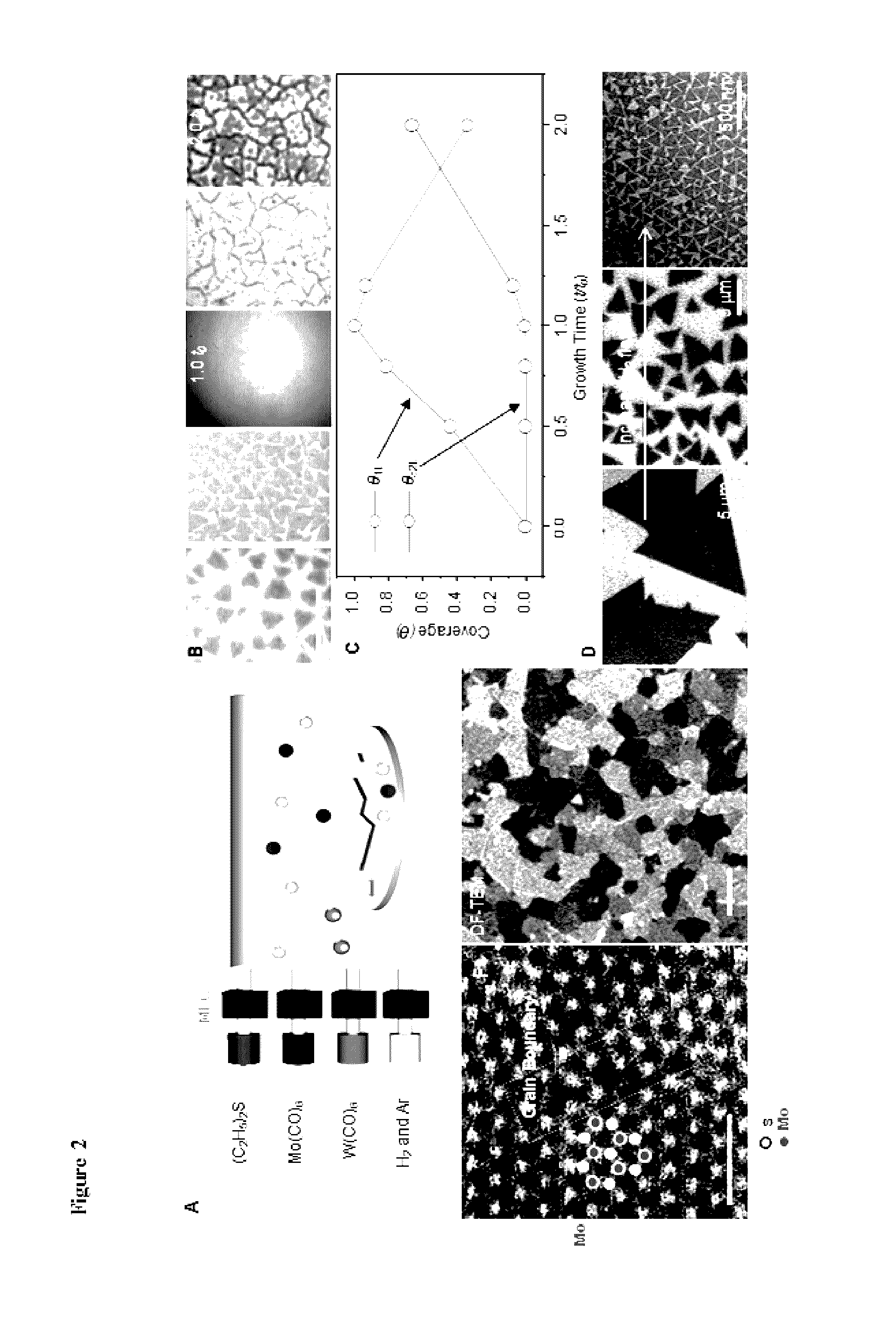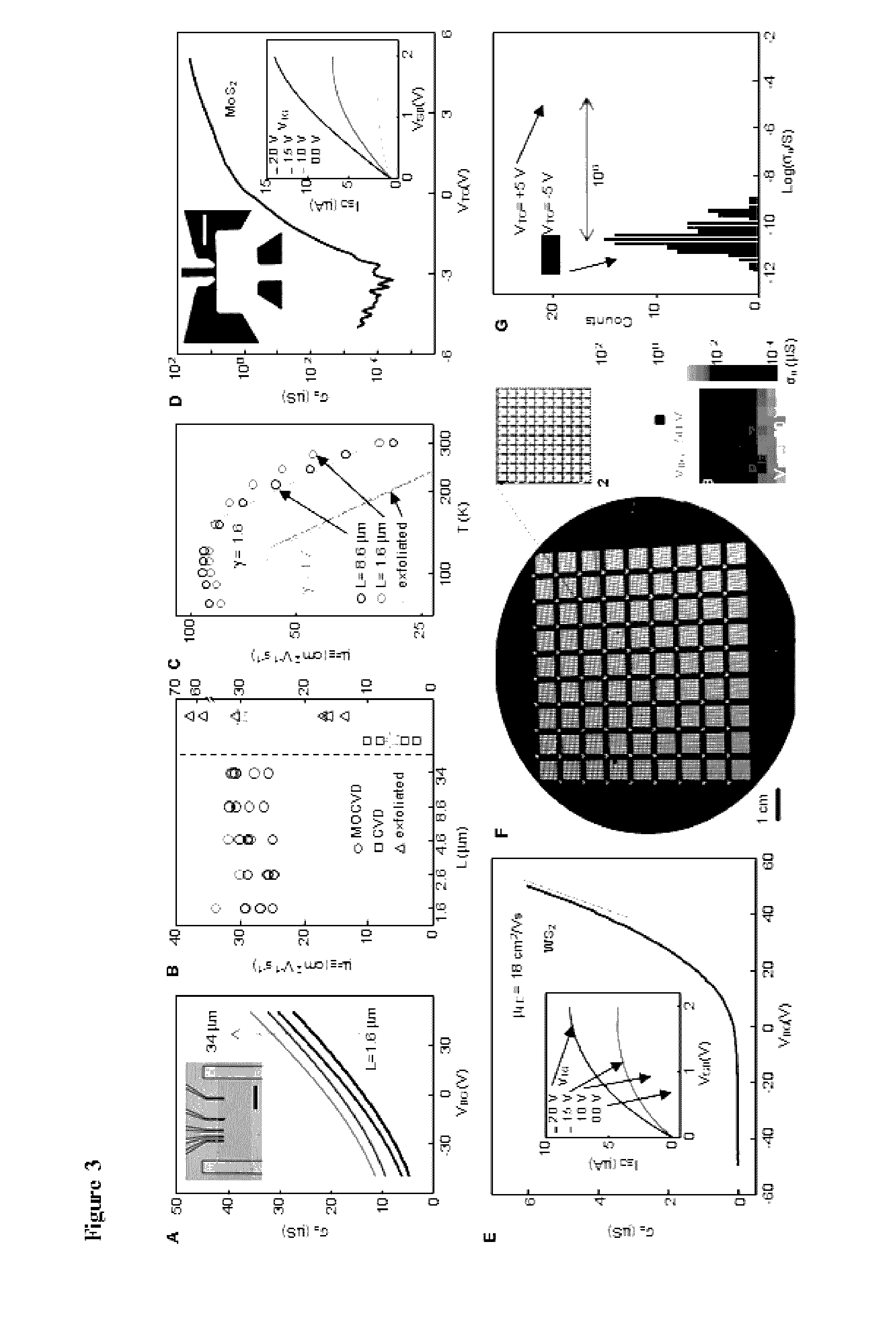Monolayer films of semiconducting metal dichalcogenides, methods of making same, and uses of same
a technology of semiconducting metal dichalcogenide and monolayer, which is applied in the direction of polycrystalline material growth, crystal growth process, chemically reactive gas, etc., can solve the problems of limited spatial uniformity and electrical performance large-scale growth of ml tmd films with high electrical performance remains unsolved challenge, and the electrical performance of the resulting material is limited. achieve high electrical carrier mobility, enhance the functionalities of such devices
- Summary
- Abstract
- Description
- Claims
- Application Information
AI Technical Summary
Benefits of technology
Problems solved by technology
Method used
Image
Examples
example 1
[0058]This example describes the fabrication and characterization of films of the present disclosure.
[0059]The growth of semiconducting ML films of MoS2 and WS2 on silicon oxide on a 4-inch wafer scale is described, with both desirable electrical performance and structural continuity, maintained uniformly over the entire films. FIG. 1 shows continuous TMD ML films and shows their wafer-scale homogeneity and intrinsic optical properties. The photos of MoS2 (FIG. 1a; grey) and WS2 (FIG. 1b; light grey) films grown on a transparent 4-inch fused silica wafer show that the TMD grown region (right half) is uniform over the whole substrate and clearly distinguishable from the bare silica substrate (left half). The optical absorption, photoluminescence (PL), and Raman spectra measured from our films show characteristics unique to ML MoS2 and WS2, respectively (FIG. 1d-f). All of these measured spectra have the same peak positions as in exfoliated ML samples (denoted by diamonds), regardless...
PUM
| Property | Measurement | Unit |
|---|---|---|
| pressure | aaaaa | aaaaa |
| pressure | aaaaa | aaaaa |
| grain size | aaaaa | aaaaa |
Abstract
Description
Claims
Application Information
 Login to View More
Login to View More - R&D
- Intellectual Property
- Life Sciences
- Materials
- Tech Scout
- Unparalleled Data Quality
- Higher Quality Content
- 60% Fewer Hallucinations
Browse by: Latest US Patents, China's latest patents, Technical Efficacy Thesaurus, Application Domain, Technology Topic, Popular Technical Reports.
© 2025 PatSnap. All rights reserved.Legal|Privacy policy|Modern Slavery Act Transparency Statement|Sitemap|About US| Contact US: help@patsnap.com



